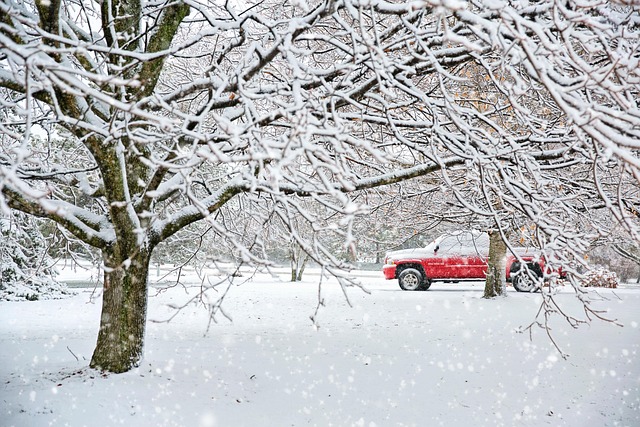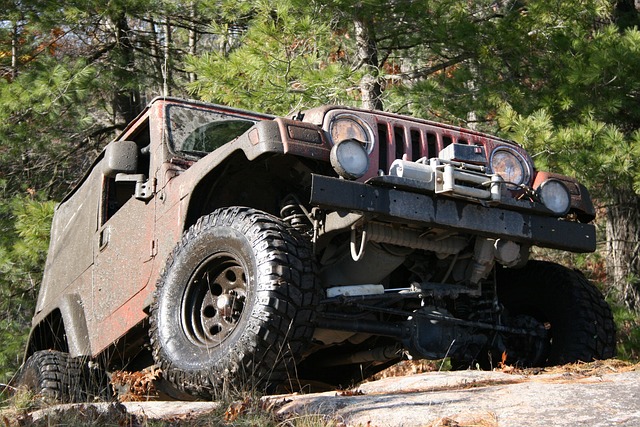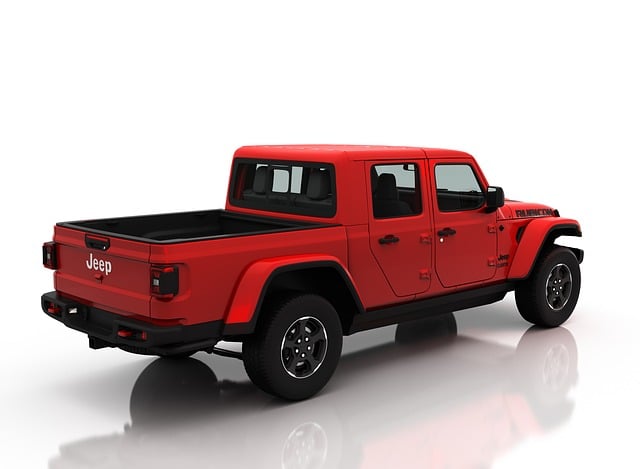Break pads, critical RGV-4×4 accessories, enhance safety and performance by converting kinetic energy into heat upon braking. Choosing right pads based on driving conditions and desired performance characteristics optimizes efficiency and safety across varied terrains. Regular maintenance, including wear monitoring and cleaning, extends pad lifespan. Proactive replacement at first sign of significant wear ensures optimal RGV-4×4 accessories brake safety and performance.
“Enhance your RGV-4×4’s braking capabilities with our comprehensive guide on brake pads. We delve into the essential role these components play in your vehicle’s stopping power, exploring various types suitable for 4×4 adventures. Learn to choose the ideal pad for optimal performance, understanding key factors that impact braking efficiency. From identifying common issues and installation tips to safety-focused wear patterns, this article equips RGV-4×4 owners with knowledge to maintain and maximize their brake pads’ lifespan.”
- Understanding Brake Pads: Their Role and Types in RGV-4×4 Accessories
- Choosing the Right Pad: Factors to Consider for Optimal Performance
- Common Issues with Brake Pads: How to Spot and Fix Them
- Installation Tips: A Step-by-Step Guide for RGV-4×4 Owners
- Maintenance and Longevity: Care Tips to Maximize Your Pad's Life
- Safety First: Understanding Wear Patterns and When to Replace Pads
Understanding Brake Pads: Their Role and Types in RGV-4×4 Accessories

Brake pads play a crucial role in the overall performance and safety of any vehicle, including the RGV-4×4 accessories. They are an essential component of the braking system, responsible for converting kinetic energy into heat when you apply the brakes, thereby slowing or stopping the vehicle. Understanding the different types of brake pads is key to ensuring optimal braking efficiency and longevity in your 4×4 rig.
In the context of RGV-4×4 accessories, there are various types of brake pads available, each designed with specific performance attributes. Some pads are crafted for superior stopping power and heat dissipation, ideal for off-road adventures where sudden stops and heavy loads are common. Others prioritize quiet operation and reduced dust generation, ensuring a smoother ride without compromising braking effectiveness. Choosing the right brake pads for your RGV-4×4 accessories will not only enhance your vehicle’s overall performance but also contribute to safer driving experiences in diverse terrains.
Choosing the Right Pad: Factors to Consider for Optimal Performance

When choosing brake pads, especially for an RGV 4×4 vehicle, several factors come into play to ensure optimal performance and safety. Firstly, consider the driving conditions and terrain you predominantly navigate. Different pad compositions cater to various environments; for rugged off-road adventures, high-performance pads with superior friction and heat dissipation are ideal. In contrast, daily commuters might benefit from quieter, low-dust pads designed for smoother stops on paved roads.
Additionally, pad thickness and material play a crucial role. Thicker pads often offer longer lifespans but may require more force to apply brakes. Materials like ceramic or organic compounds provide excellent heat resistance and reduced noise, while steel or iron-based pads are known for their durability and aggressive stopping power. For RGV 4×4 accessories enthusiasts, matching the pad type with your vehicle’s specifications and intended use will significantly enhance braking efficiency and overall driving experience.
Common Issues with Brake Pads: How to Spot and Fix Them

Brake pads, a vital component in any vehicle’s braking system, can develop issues over time. Recognizing these problems is crucial for maintaining optimal driving safety and preventing more severe damage. Common issues include pad wear, leading to reduced stopping power and increased noise during braking. This can often be spotted by a visible thinning of the pads or a high-pitched squealing sound when applying brakes.
To address worn-out pads, drivers should consider replacing them promptly with high-quality RGV 4×4 accessories. Other issues might include pad warping, caused by over heating or uneven wear, resulting in pulsating braking. If observed, it’s essential to inspect the brake calipers and rotors for any damage or corrosion. Regular maintenance, including timely pad replacement and cleaning of the braking system, can help prevent these problems and ensure your vehicle’s brakes function efficiently.
Installation Tips: A Step-by-Step Guide for RGV-4×4 Owners

Installing new brake pads on your RGV-4×4 is a task that, with the right tools and knowledge, can be accomplished by experienced owners. First, gather all necessary components, ensuring compatibility with your vehicle model. Next, prepare your workspace by raising the vehicle securely using jack stands, ensuring it’s stable and safe from rolling. Put on protective gear, including gloves and safety glasses, to shield yourself from debris.
Begin by removing the old brake pads. Loosen and detach any retaining clips or bolts securing the calipers. Gently pull the calipers away from the rotors to expose them. Clean the rotor surfaces thoroughly, eliminating any rust or contaminants. Install the new pads, aligning them correctly within the caliper. Reattach the calipers securely, ensuring they are properly seated on the rotors. Lower the vehicle and test the brake mechanism to ensure smooth operation and even pad contact. Remember, proper installation is key to optimal braking performance and safety, so take your time and follow these steps diligently for your RGV-4×4 accessories.
Maintenance and Longevity: Care Tips to Maximize Your Pad's Life

Regular maintenance is key to extending the lifespan of your brake pads, ensuring optimal performance and safety on the road. One of the most important care tips is to keep an eye on your pad’s wear level. Regularly inspect them for any signs of damage, corrosion, or thinning, as these can indicate that it’s time for a replacement. Many RGV-4×4-accessories offer wear indicators that signal when pads need to be changed, making this process hassle-free.
Proper cleaning and lubrication are also vital. After each drive, especially in rough terrain, wipe down the pads with a dry cloth to remove any debris or mud buildup. This simple step prevents unwanted corrosion and ensures consistent braking efficiency. Additionally, applying a lightweight lubricant can help reduce friction between the pads and rotors, further prolonging their life.
Safety First: Understanding Wear Patterns and When to Replace Pads

When it comes to brake pads, safety is paramount. Understanding wear patterns is key to knowing when to replace them. Regularly inspect your pads for signs of excessive wear, such as thinning or cracking. These indicators suggest that the friction material has worn down, reducing the pad’s effectiveness in stopping your vehicle.
With products like RGV-4×4-accessories offering high-quality replacement options, staying on top of brake pad maintenance is straightforward. Don’t wait for sudden changes in braking performance or audible squealing to signal a problem. By replacing pads at the first sign of significant wear, you ensure optimal safety and control during every drive, whether tackling rugged off-road trails or navigating busy city streets.
In conclusion, brake pads are a vital component of your RGV-4×4 accessories, ensuring safe and efficient braking. By understanding their role, choosing the right type for your vehicle, and maintaining them properly, you can maximize performance and extend their lifespan. Regular checks and timely replacements, guided by knowledge of common issues and wear patterns, are key to keeping you and your vehicle safe on the road. For all your RGV-4×4 accessories needs, remember that informed choices and proactive maintenance make all the difference.
